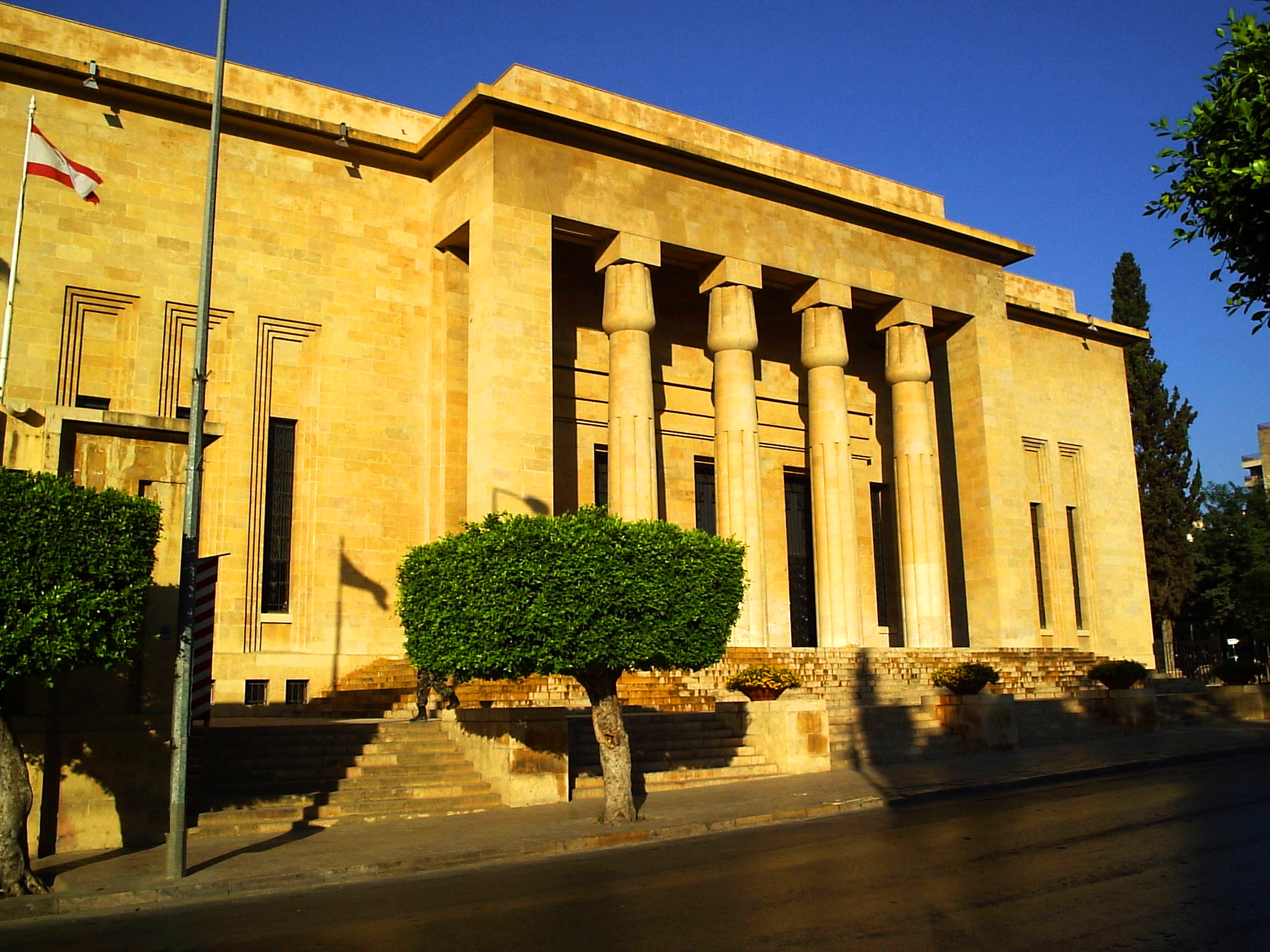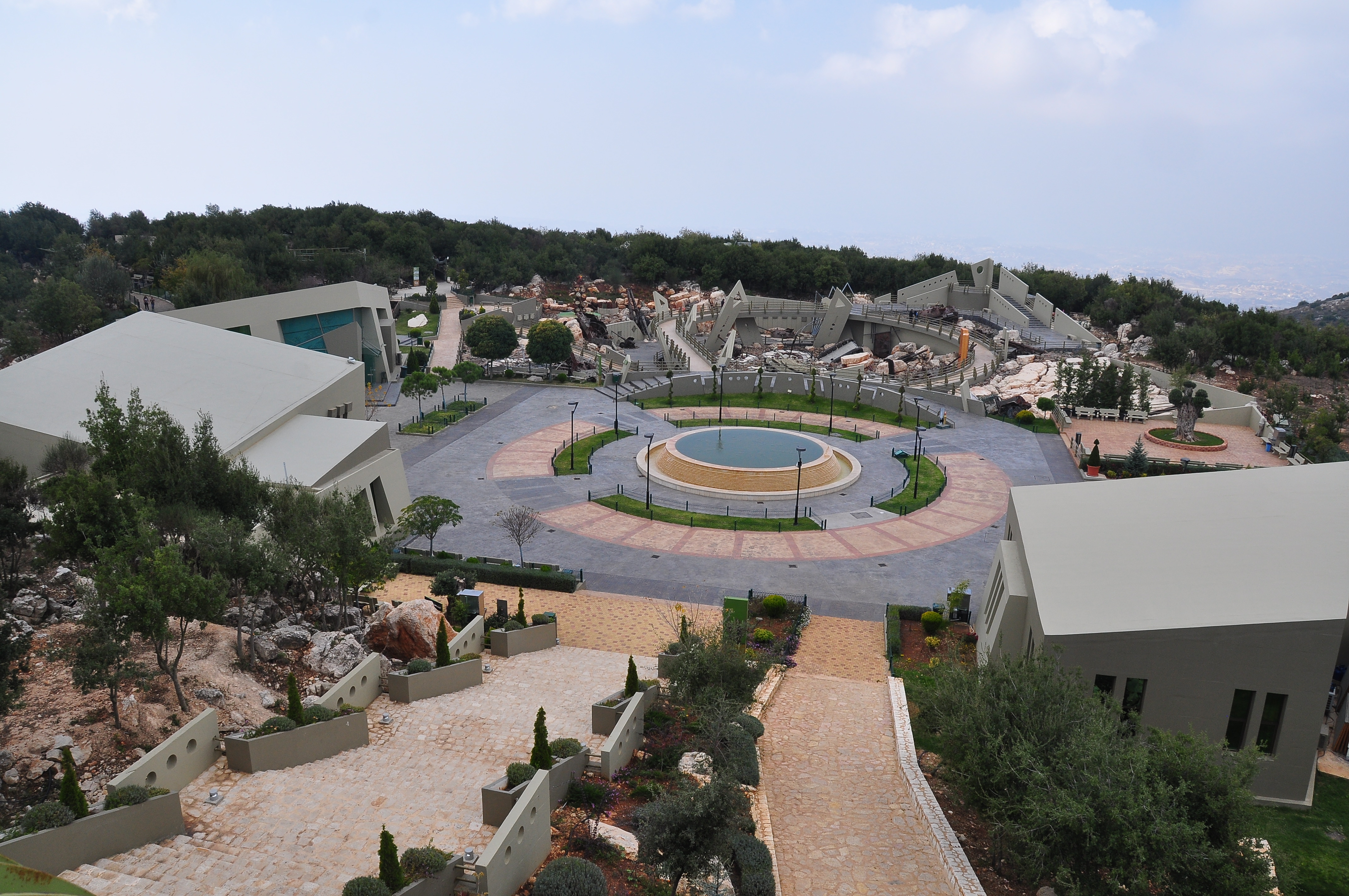|
List Of Museums In Lebanon
This is a list of museums in Lebanon. Ethnographic Museum of the University of Balamand Cilicia Museum Armenian Genocide Orphans'"Aram Bezikian" Museum * Ameen Rihani Museum * Archaeological Museum of the American University of Beirut * Baalbek * Banque Du Liban Museum * Beit Beirut * Beiteddine Palace Museum * Bsous Silk Museum * Byblos Fossil Museum * Byblos Wax Museum * Château Ksara * Citadel of Raymond de Saint-Gilles * Gibran Museum * Lebanese Heritage Museum * Lebanese Marine and Wildlife Museum * Lebanese Military Museum * Mim Museum * Moussa Castle * Modern And Contemporary Art Museum * Museum of Lebanese Prehistory * Nabu Museum * National Museum of Beirut * Robert Mouawad Private Museum * Saint George Greek Orthodox Cathedral Archaeological Crypt Museum * Sidon Soap Museum * Sursock Museum * Tourist Landmark of the Resistance See also * Tourism in Lebanon * History of Lebanon * Culture of Lebanon * List of museums * Archaeology of Lebanon {{Asia topic, Lis ... [...More Info...] [...Related Items...] OR: [Wikipedia] [Google] [Baidu] |
Beirut Museum
Beirut, french: Beyrouth is the capital and largest city of Lebanon. , Greater Beirut has a population of 2.5 million, which makes it the third-largest city in the Levant region. The city is situated on a peninsula at the midpoint of Lebanon's Mediterranean coast. Beirut has been inhabited for more than 5,000 years, and was one of Phoenicia's most prominent city states, making it one of the oldest cities in the world (see Berytus). The first historical mention of Beirut is found in the Amarna letters from the New Kingdom of Egypt, which date to the 14th century BC. Beirut is Lebanon's seat of government and plays a central role in the Lebanese economy, with many banks and corporations based in the city. Beirut is an important seaport for the country and region, and rated a Beta + World City by the Globalization and World Cities Research Network. Beirut was severely damaged by the Lebanese Civil War, the 2006 Lebanon War, and the 2020 massive explosion in the Port o ... [...More Info...] [...Related Items...] OR: [Wikipedia] [Google] [Baidu] |
Mim Museum
The Mim Museum is a private museum in Beirut, Lebanon. The museum displays more than 2000 minerals, representing 450 different species from 70 countries, and is considered one of the most significant private collections of minerals in the world. It opened in 2013. The museum also hosts an exhibition of marine and flying fossils from Lebanon. History The MIM mineral collection was put together from 1997 by Salim Eddé, chemical engineer and co-founder of the computer company Murex4. In 2004, he decided to make his collection accessible to the public and designed the first museum of its kind in Lebanon. Eddé presented the idea to Father René Chamussy, rector of the Saint Joseph University, who adopted it and reserved for the collection 1,300 m2 in the basement of a building then under construction on the campus near the National Museum of Beirut. During the next ten years, Eddé continued to build up his collection, assisted by Jean-Claude Boulliard, curator of the Sorbonne co ... [...More Info...] [...Related Items...] OR: [Wikipedia] [Google] [Baidu] |
Culture Of Lebanon
The culture of Lebanon and the Lebanese people emerged from various civilizations over thousands of years. It was home to the Phoenicians and was subsequently conquered and occupied by the Assyrians, the Greeks, the Romans, the Persians, the Arabs, the Crusaders, the Ottoman Turks and the French. This variety is reflected in Lebanon's diverse population, composed of different religious groups, and features in the country's festivals, literature, artifacts, cuisine and architecture of Lebanon. Tourism in Lebanon is popular with periods of interruption during conflict. The Maronite Catholic and the Druze founded modern Lebanon in the early eighteenth century, through the ruling and social system known as the "Maronite-Druze dualism" in Mount Lebanon Mutasarrifate. Despite the religious and denominational diversity of the Lebanese, they "share an almost common culture".Stokes, Jamie. ''Encyclopedia of the Peoples of Africa and the Middle East'', page 406 Based on Arti ... [...More Info...] [...Related Items...] OR: [Wikipedia] [Google] [Baidu] |
History Of Lebanon
The history of Lebanon covers the history of the modern Republic of Lebanon and the earlier emergence of Greater Lebanon under the French Mandate for Syria and the Lebanon, as well as the previous history of the region, covered by the modern state. The modern Lebanon, State of Lebanon has existed within its current borders since 1920, when Greater Lebanon was created under Sykes–Picot Agreement, French and British mandate, resulting from the dismemberment of the Ottoman Empire at the end of World War I. Before this date, the designation “Lebanon” concerned a territory with vaguely defined borders, encompassing the mountain range of Mount Lebanon and its outskirts (mainly the Mediterranean Sea, Mediterranean coast and the plains of Beqaa Valley, Bekaa and Akkar District, Akkar). The idea of an independent Lebanon, however, emerged during the end of the Mount Lebanon Emirate where Maronites, Maronite clerics vowed for an independent nation. Prehistory Ksar Akil, northeast of ... [...More Info...] [...Related Items...] OR: [Wikipedia] [Google] [Baidu] |
Tourism In Lebanon
The tourism industry in Lebanon has been important to the local economy historically and to this day comprises a major source of revenue for the country. Before the Lebanese Civil War, Beirut was widely regarded as "''The Paris of the Middle East''" or also "''The Pearl of the Middle East''" often cited as a financial and business hub where visitors could experience Levantine Mediterranean culture, cuisine, history, archaeology, and architecture of Lebanon. From Stone Age settlements to Phoenician city-states, from Roman temples to rock-cut hermitages, from Crusader Castles to Mamluk mosques and Ottoman hammams, the country's historical and archaeological sites are displayed all across the country, reflecting thousands of years of world history. In addition to physical attractions, Lebanon has a long-standing history of cultural tourism. Outsider interest in Lebanese and Levantine culture was especially stirred following the visits of many European orientalists, scholars, ... [...More Info...] [...Related Items...] OR: [Wikipedia] [Google] [Baidu] |
Tourist Landmark Of The Resistance
The Tourist Landmark of the Resistance, also known as Museum for Resistance Tourism, is a war museum operated by Hezbollah near the village of Mleeta in southern Lebanon. The museum opened on May 25, 2010, marking the 10th anniversary of the Israeli withdrawal from southern Lebanon in 2000. The site was once an important base for Hezbollah fighters."Hezbollah’s jihad theme park; The extremist group hopes to attract fresh recruits to its cause," Jen Cutts, June 10, 2010, . History Opened in May 2010, the inauguration of the museum was attended by representatives of the president and prime mi ...[...More Info...] [...Related Items...] OR: [Wikipedia] [Google] [Baidu] |
Sursock Museum
The Sursock Museum ( ar, قصر سرسق), which is officially known as the Nicolas Ibrahim Sursock Museum, is a modern art and contemporary art museum in Beirut, Lebanon. History In 1912, the wealthy and prominent Lebanese aristocrat Nicolas Ibrahim Sursock built the private villa that now houses the museum. He decreed in his will that the villa be transformed into a museum. When he died in 1952, he bequeathed the villa to the city of Beirut.Daratalfunun.org The museum opened in 1961, directed by Amine Beyhum, with an exhibit of works of contemporary Lebanese artists, setting a precedent for cultural events in Beirut. [...More Info...] [...Related Items...] OR: [Wikipedia] [Google] [Baidu] |
Sidon Soap Museum
The Soap Museum (also called the Audi Soap Museum) is a museum in Sidon specialized in Levantine soaps. It is open since 2000 and managed by the Audi Foundation.The Soap Museum ( Audi Foundation ''Visitsaida.com'' History The soap workshop was originally built in Sidon by the Hammoud family in the 17th century. During the 19th century (around 1880Celebrating local craftsmanship''Mindthegap.com''), the Audi family became the owner of the soap workshop and turned it into a family residence. It was abandoned in the 1980s when the [...More Info...] [...Related Items...] OR: [Wikipedia] [Google] [Baidu] |
Saint George Greek Orthodox Cathedral
Saint George Greek Orthodox Cathedral (Consecration#Eastern Churches, consecrated 1764, ar, كاتدرائية القديس جاورجيوس للروم الارثوذكس) is the seat of the Greek Orthodox Metropolitan bishop of the Greek Orthodox Archdiocese of Beirut and its dependencies. It is the city's oldest extant church: it has been built over the disappeared ''Anastasi Romano-Byzantine Cathedral''. History The establishment of the Greek Orthodox Archdiocese of Beirut is attributed according to the Greek Orthodox tradition to the Apostles in the New Testament, Apostle Quartus, Quartus of Berytus, one of the Seventy disciples, who served as Beirut's first bishop. List of Byzantine Emperors, Byzantine emperor Theodosius II issued a decree AD elevating the bishop of Beirut Efstathius to the rank of Metropolitan bishop. The city was until then a diocese of the archbishopric, Metropolis of Tyre. The Resurrection of Jesus, Anastasis cathedral was the first church to be built ... [...More Info...] [...Related Items...] OR: [Wikipedia] [Google] [Baidu] |
Robert Mouawad Private Museum
The Robert Mouawad Private Museum ( ar, متحف روبير معوض الخاص) is a private residence in Beirut's Zokak el-Blat quarter that was turned into a museum by the Lebanese businessman Robert Mouawad. The palace was built in the neo-gothic style by the Lebanese politician and art collector Henri Philippe Pharaoun in 1891. The museum was inaugurated on 11 May 2006. It houses objects of value reflecting a mix of artistic oriental and occidental cultures, and a collection of rare books, Chinese porcelain, ceramics, and other significant objects. The palace's architecture and design reflects Pharaoun's infatuation with Islamic Art and decorative wooden panels that date back to the 17th century, especially after his repeated travels to Syria. Other displayed artifacts include Byzantine mosaics, Roman marble sculptures, jars and jugs, historical columns, pottery, ancient weapons, unique carpets, jewelry pieces, precious stones, Melkite Catholic el, Μελχιτική Ε� ... [...More Info...] [...Related Items...] OR: [Wikipedia] [Google] [Baidu] |
National Museum Of Beirut
The National Museum of Beirut ( ar, متحف بيروت الوطنيّ, ''Matḥaf Bayrūt al-waṭanī'' or French language, French: Musée national de Beyrouth) is the principal museum of archaeology in Lebanon. The collection begun after World War I, and the museum was officially opened in 1942. The museum has collections totaling about 100,000 objects, most of which are antiquities and medieval finds from excavations undertaken by the Directorate General of Antiquities. About 1300 artifacts are exhibited, ranging in date from History of ancient Lebanon, prehistoric times to the History of Lebanon under Arab rule, medieval Mamluk period. During the 1975 Lebanese Civil War, the museum stood on the front line that separated the warring factions. The museum's Egyptian Revival architecture, Egyptian Revival building and its collection suffered extensive damage in the war, but most of the artifacts were saved by last-minute preemptive measures. Today, after a major renovation, th ... [...More Info...] [...Related Items...] OR: [Wikipedia] [Google] [Baidu] |
Nabu Museum
The Nabu Museum is a museum in El-Heri, in Ras Al Shaqa’, Lebanon. It opened in 2018, having been built in just eight months by businessman Jawad Adra to house his collection of about 2,000 items including both contemporary works of art and antiquities. Critical questions came up about the unclear provenance of the finds displayed in the museum, as many of them come from regions where looting was going on in recent decades (Investi ... [...More Info...] [...Related Items...] OR: [Wikipedia] [Google] [Baidu] |


_Musée_des_minéraux_-_Beyrouth_01.jpg)




.jpg)
